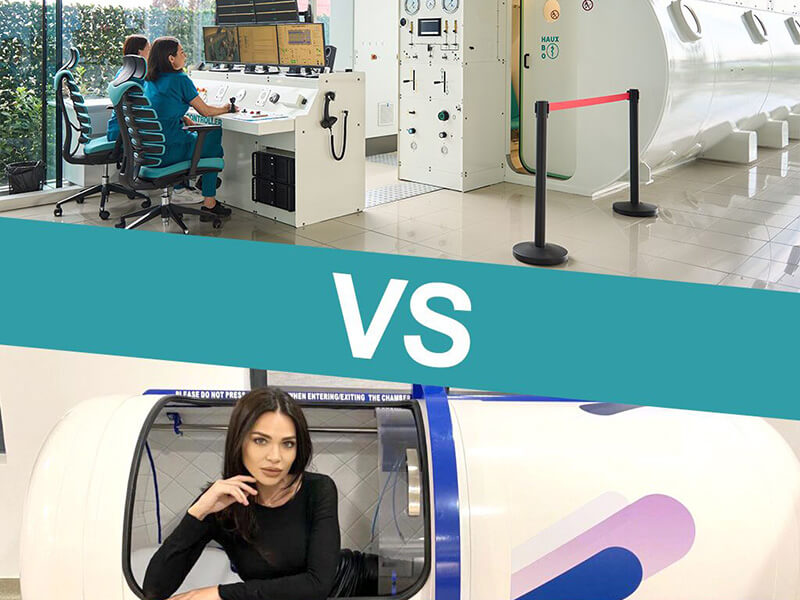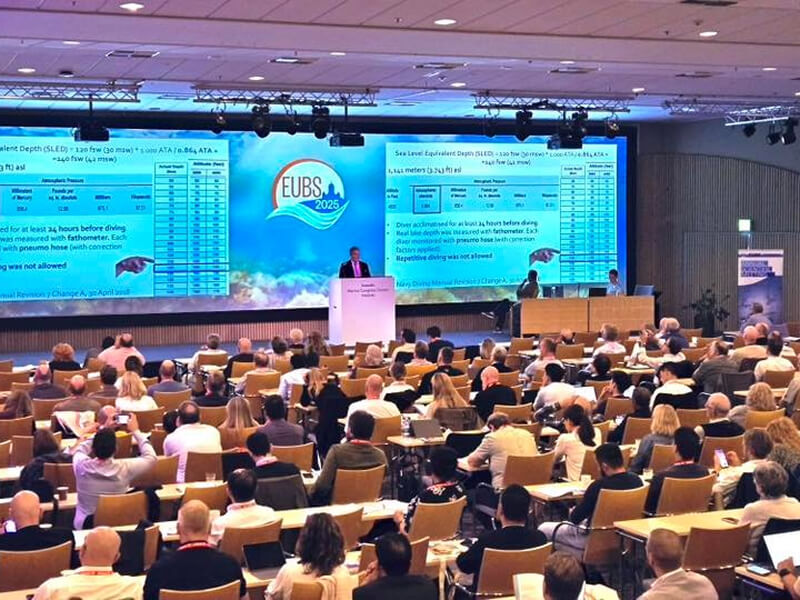
Article reviewed by: Dr. Sturz Ciprian, Dr. Tîlvescu Cătălin and Dr. Alina Vasile
Hyperbaric oxygen therapy: beneficial effects in treating diabetic foot
Hyperbaric oxygen therapy is indicated in the treatment of diabetic foot. Every 30 seconds, a person suffers a leg amputation due to diabetic complications. Furthermore, the risk of suffering from diabetic foot complications increases by 17-60% if the person has had a similar experience in the last 3 years.
What is hyperbaric oxygen therapy?
Hyperbaric oxygen therapy (HBOT) is a method of treatment in which the patient is exposed to increased oxygen pressure in a pressurised chamber, specifically a special hyperbaric chamber for medical use. During the session, the air pressure is increased by two to three times the normal level. And the high levels of oxygen in the body can relieve symptoms associated with certain conditions and speed up the healing and regeneration of damaged tissues. Before a treatment and recovery programme can begin, prior consultation and assessment by a hyperbaric medicine specialist is required.
What is diabetic foot?
Diabetic foot is a complication of diabetes, which results from poor blood circulation to the lower limbs and peripheral nerve compromise. The skin, muscles, bones, and joints suffer, resulting in diabetic neuropathy.
Diabetic foot symptoms include:
- Skin lesions: Swelling, sores or blisters may appear on the feet, usually on the soles or lower legs. These can cause ulceration and infection.
- Numbness or tingling: The patient may feel numbness, tingling or experience a reduced ability to feel pain or temperature changes in the feet.
- Change in skin colour: The skin of the feet may become pale, red, or dark. It may also be evidenced by redness or swelling of the affected area.
- Decreased or no pain: the patient does not feel the pain.
The symptoms of diabetic foot can vary from person to person. Sometimes patients can have serious complications even in the absence of obvious symptoms. It is therefore important for people with diabetes to inspect their feet regularly and pay close attention to the presence of bruises or inflammation. Because the immune system of people with diabetes is weakened, they are prone to infections, as glucose promotes the multiplication of microbes. Thus, a foot infection has an increased risk of complications.
Treating diabetic foot with hyperbaric oxygen therapy
Hyperbaric oxygen therapy is a highly effective adjuvant treatment for diabetic complications such as diabetic foot ulcers.
According to specialists, diabetic foot problems are the most common cause of hospital admission for patients with diabetes and one of the causes of lower limb amputation. Because there is poor circulation to the lower limbs, less oxygen reaches these areas. Without it, the healing of infections and ulcers is hampered.
With hyperbaric oxygen therapy, the body receives up to 20 times more pure oxygen, which is then transported by the body to the extremities, helping to deeply oxygenate tissues. This not only stimulates the formation of new blood vessels but also prevents bacterial over-infection.
Furthermore, hyperbaric therapy stimulates the bone marrow to release more endothelial cells (EPCS), which migrate to the wounds and help the injuries heal. Thus, hyperbaric oxygen therapy is an effective and promising solution in treating diabetic foot. It increases the rate of healing, and decreases the length of hospitalization and the number of amputations.
A study published in DiabetesJournals.org compared the effects of hyperbaric oxygen therapy with those of standard diabetic foot wound care on 100 patients who did not respond to one month of appropriate treatment. This found a 66% healing rate after hyperbaric therapy sessions.
At the same time, only 16% of patients who received hyperbaric oxygen therapy subsequently required grafting or debridement, compared with 100% of patients who did not receive hyperbaric oxygen. As for the lower limb amputation rate, it was only 8%, compared to 82% for conventional treatments.
A therapy session can last up to 3 hours and is carried out in a hyperbaric chamber, where the patient sits with an oxygen mask over their face, breathing 100% pure oxygen.
More information on the effectiveness of hyperbaric oxygen treatment for diabetes complications can be found in the medical studies available HERE.
At the Hyperbarium Clinic the patient benefits from complex and personalized consultation and treatment, being monitored by specialized medical staff.
Appointments can be made here.
Sources:
https://www.academie-medecine.fr/oxygene-et-processus-de-cicatrisation/
https://hyperbarium.com/en/hyperbaric-medicine/studies/complications-of-diabetes




